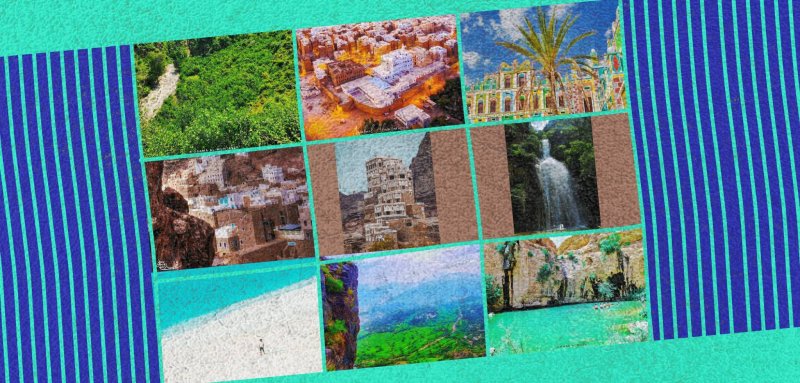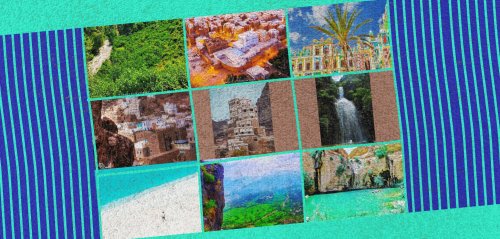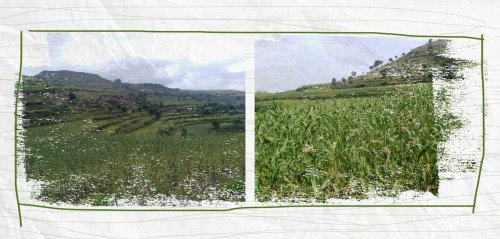When talking about Yemen, the first thing that comes to mind for many are images of war and destruction. However, Yemen also has a rich heritage and an ancient civilization that extends back to prehistoric times, as well as breathtaking nature. This is what many active Yemenis online users are working to showcase to other people and nations.
Among the initiatives and social media accounts working to highlight the heritage and beauty of Yemen, with the aim of correcting the negative stereotypical image of the country that has been created as a result of the war, and also encouraging both domestic and outside tourism, are the "Pictures of Yemen" account which is followed by more than 75,000 people on Twitter, "Yemen Places", which is followed by about 39,000 people on Twitter, and "Yemen: The Buried Treasure", which is followed by more than 22,000 people on Twitter.
In this report, we have chosen ten magical places that Yemenis believe the world must see:
Beyond the war: In ten photos, experience the best and most beautiful parts of Yemen in the eyes of locals
The crystal beaches of Socotra
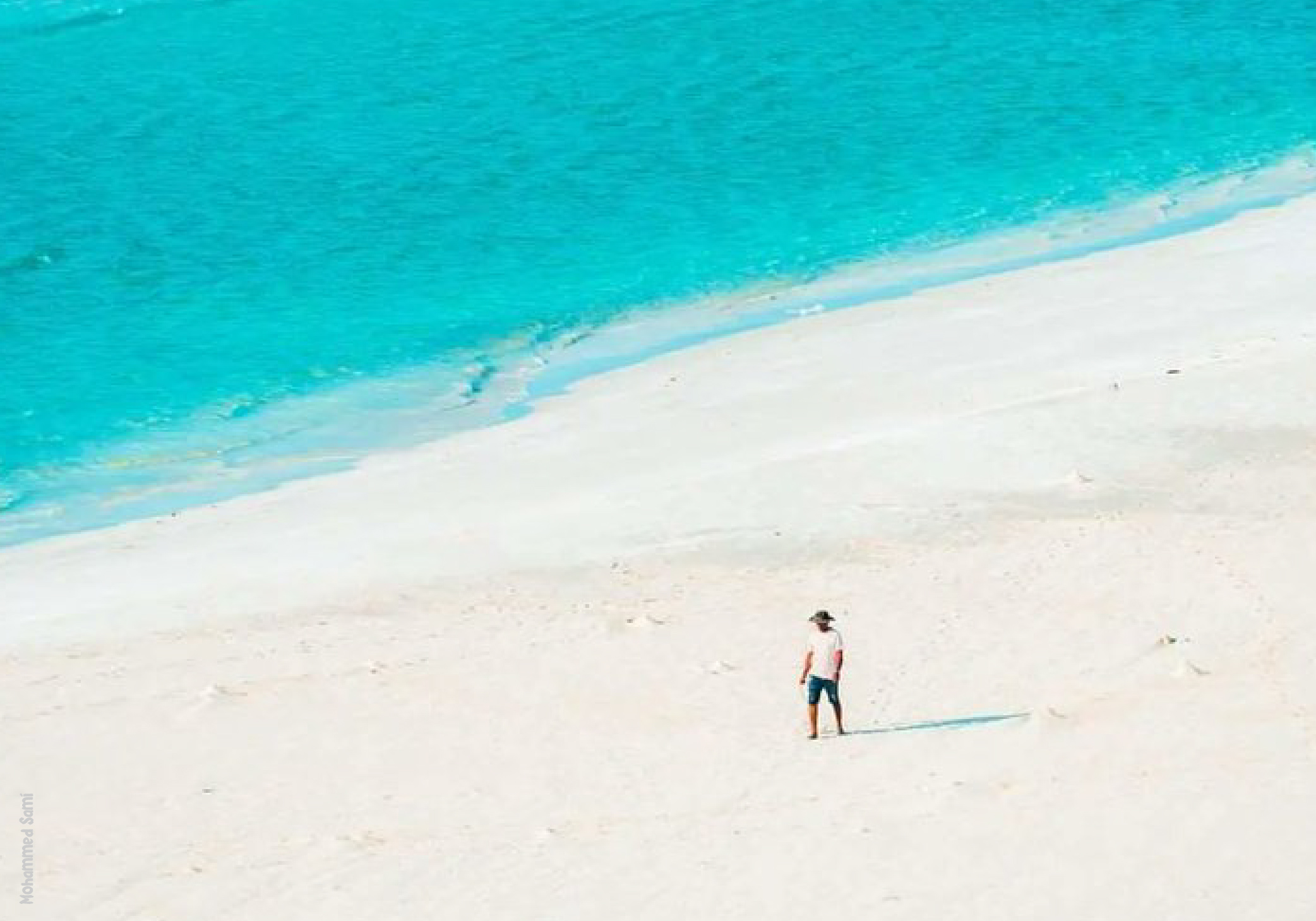
The island of Socotra is famous for its natural beauty, often referred to as the "Maldives of Yemen/Arabia". The Socotra Archipelago is located on the southern coast of the Arabian Peninsula, facing the city of Mukalla, east of the Gulf of Aden, where the Indian Ocean meets the Arabian Sea. The Socotra Archipelago consists of a main island, Socotra Island, the largest of the Arabian and Yemeni islands (125 km long and 42 km wide with a coastline stretching over 300 km), inhabited by about 44,880 people.
Not many people know that Yemen has 183 islands, 25% of which have no names, and they are distributed across four main archipelagos, one of which is Socotra. These Yemeni islands are characterized by a tropical climate, golden sands, and crystal clear waters, qualifying them to be a global destination for recreation and ecotourism.
The Haraz Mountains
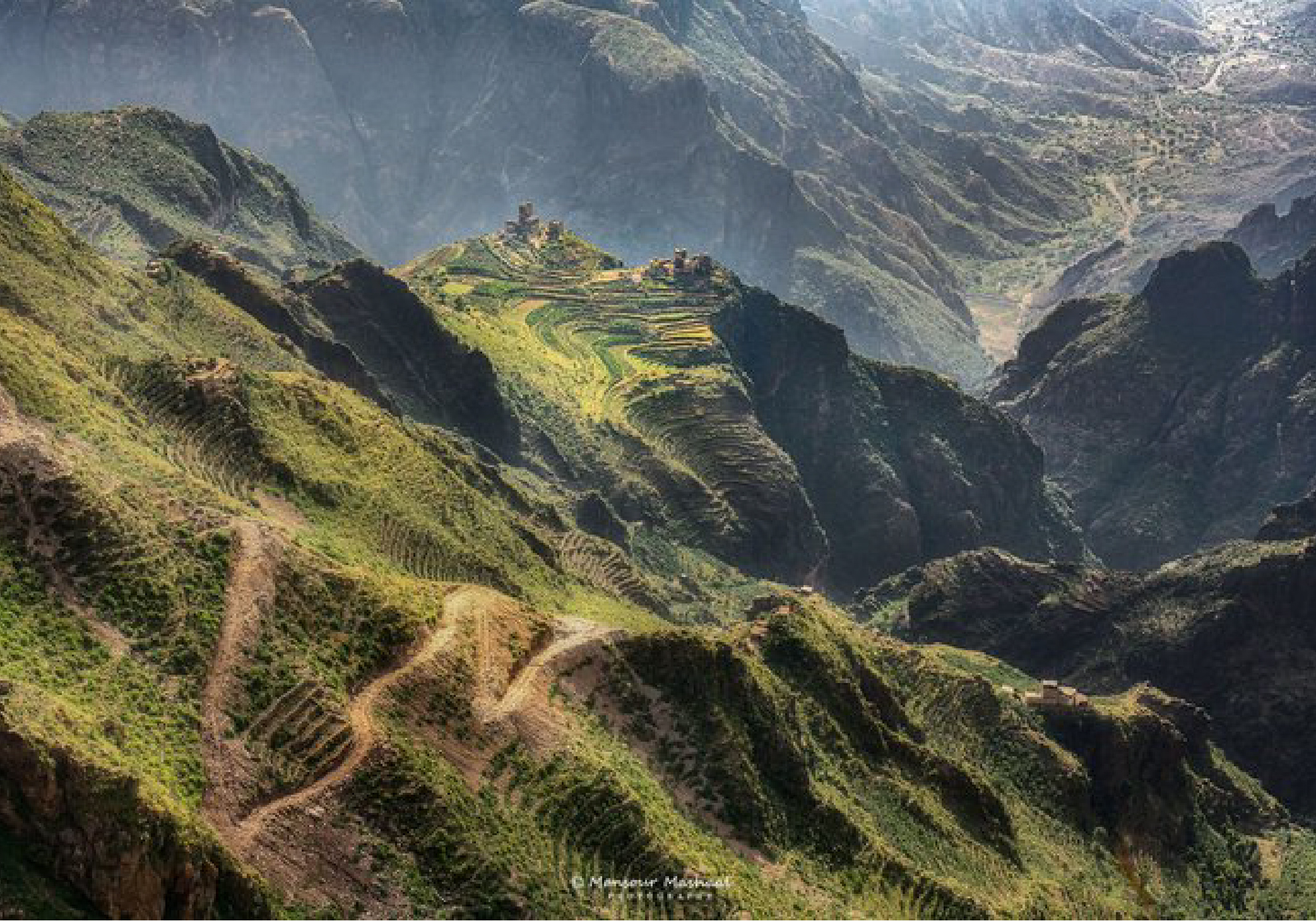
The Haraz Mountains are a mountainous region located between the capital Sana'a and Al-Hudaydah. It is one of the most important areas for environmental and cultural tourism in Yemen. Yemen submitted a request to register the site on the UNESCO World Heritage List in 2002.
What's amazing about these highlands is the lack of any boundaries between its buildings and natural landscapes, and between its rocky parts and terraced fields for farming, in addition to the artistic vibrant blend of green, yellow, black, gray, and other colors.
Generally, the terrain in Sana'a is characterized by high mountains and fertile agricultural valleys, home to the highest mountain peak in the Arabian Peninsula, Jabal an Nabi Shu'ayb, which rises to about 3,760 meters above sea level.
Nature in Raymah
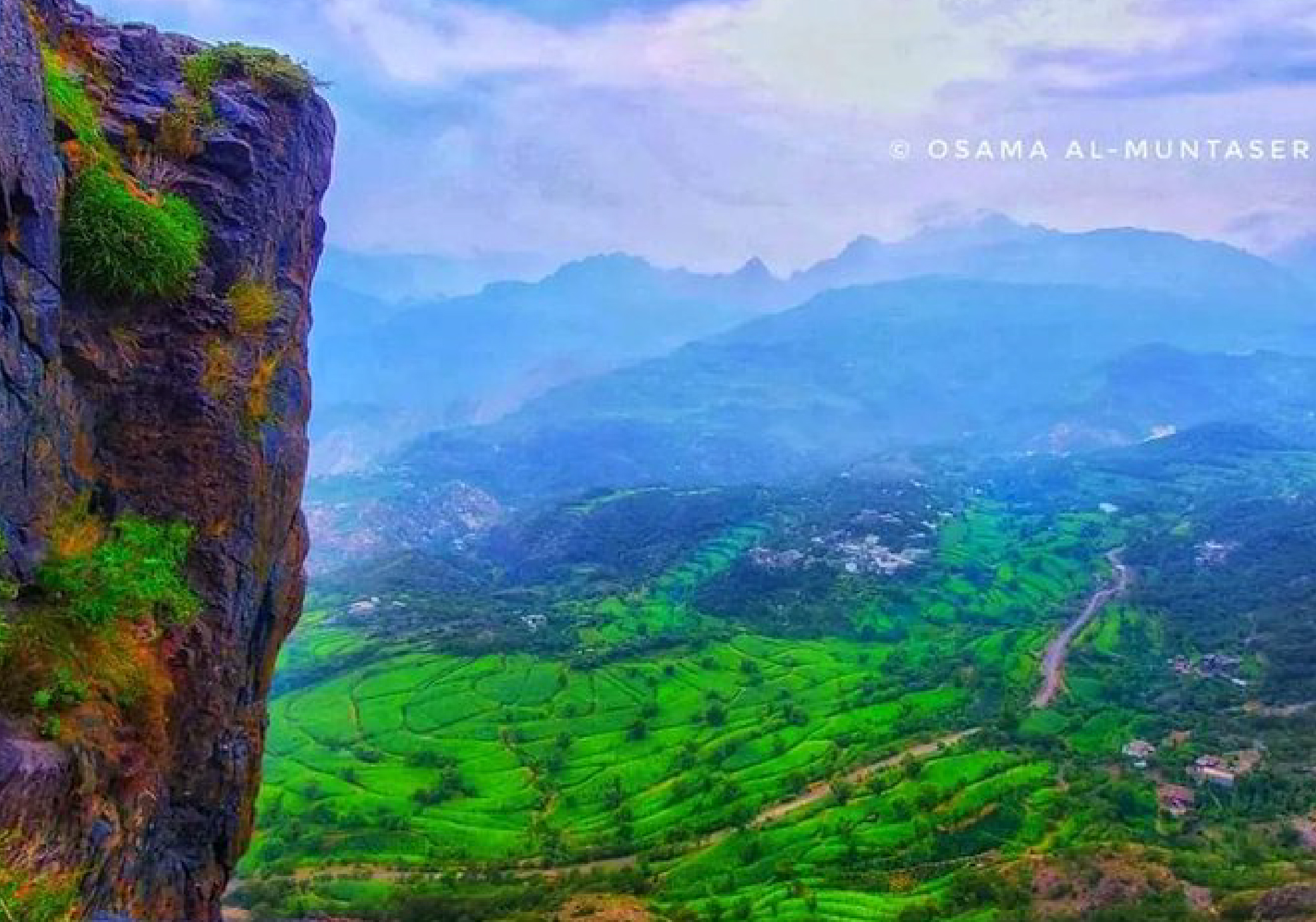
Raymah Governorate is located in the middle of Yemen's western mountain range, and is one of the provinces that was established in 2004. It is located about 200 kilometers away from the capital Sana'a, and its population constitutes 1.05% of the total population of Yemen.
The world's first skyscraper, the "Arab Maldives", the "Capital of the Clouds" and the "Valley of Secrets and Wonders"... Get to know ten places that reflect the rich heritage and splendor of Yemen
The governorate is known for its natural beauty, towering mountains covered with sprawling greenery, enchanting valleys and lush forests. Therefore, Raymah is sometimes known as the "Neighbor of the Clouds" and a "Garden Suspended Between Heaven and Earth" and the "Capital of the Clouds."
Raymah is home to dozens of archaeological and tourist sites, including historic mosques such as al-Dhala' Mosque and the Grand Mosque in al-Jabin, historic fortresses such as Goran Fortress and Jabal Huzar, and natural sites such as Jabal Sharaf and the Dahiya al-Rakab Waterfall.
The ancient archaeological city of Shibam
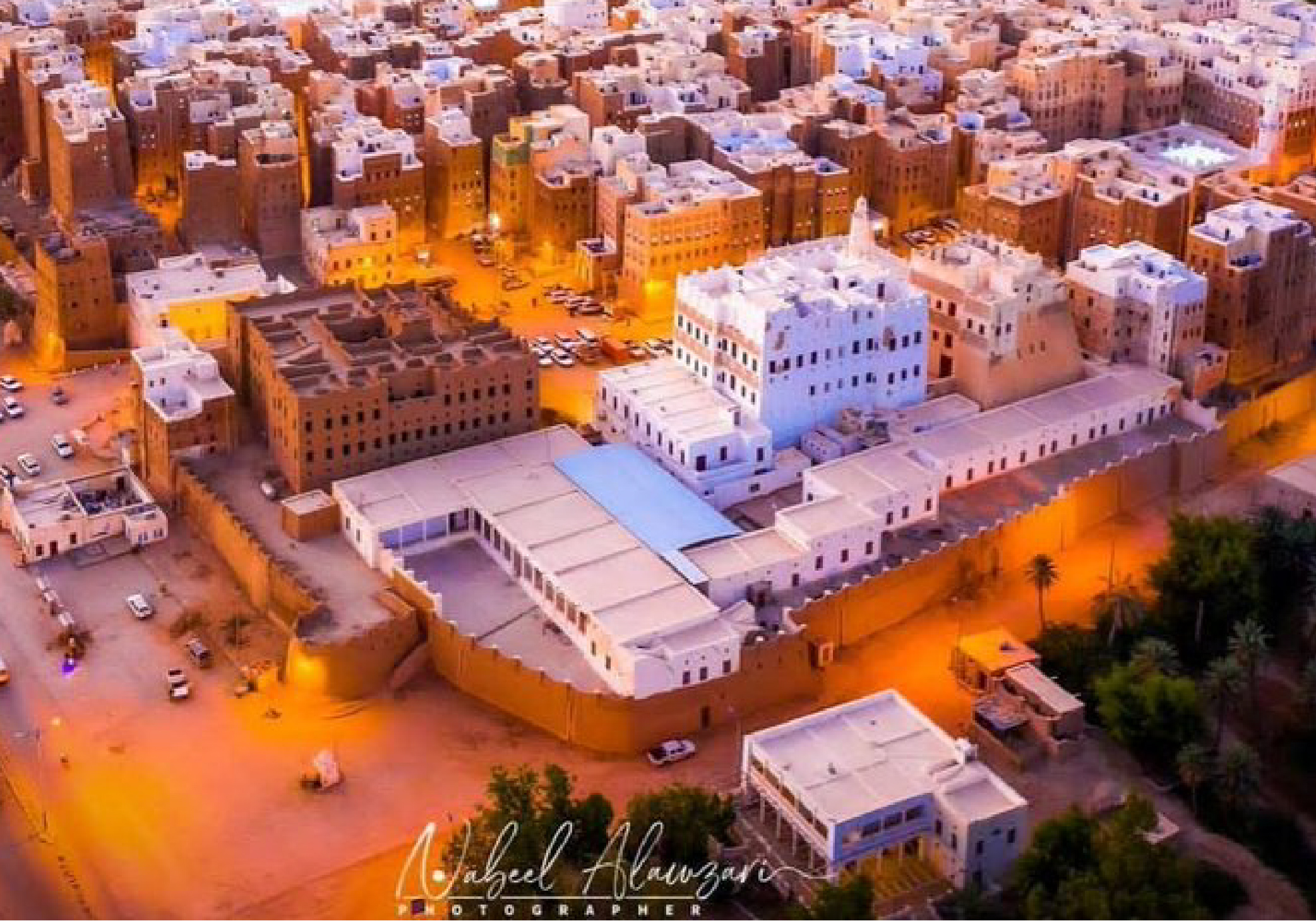
The historic city of Shibam in Hadhramaut is known as the "Manhattan of the Desert" or "Chicago of the Desert" and has been on UNESCO's World Heritage List since 1982. Many Yemenis say that it is home to the world's first skyscraper.
The ancient city dates back to the 16th century and was built on a cliff or rocky slope that rises several hundred meters above the valley floor. Before Islam, the city rose to prominence and became the capital of the Kingdom of Hadhramaut in 300 AD after the destruction of its previous capital, Shabwa.
It was designed in the form of a fortified rectangle divided into streets and squares. Architecturally, it is a fine example and great model of human settlements, land use, and urban planning.
Al-Qalt waterfall
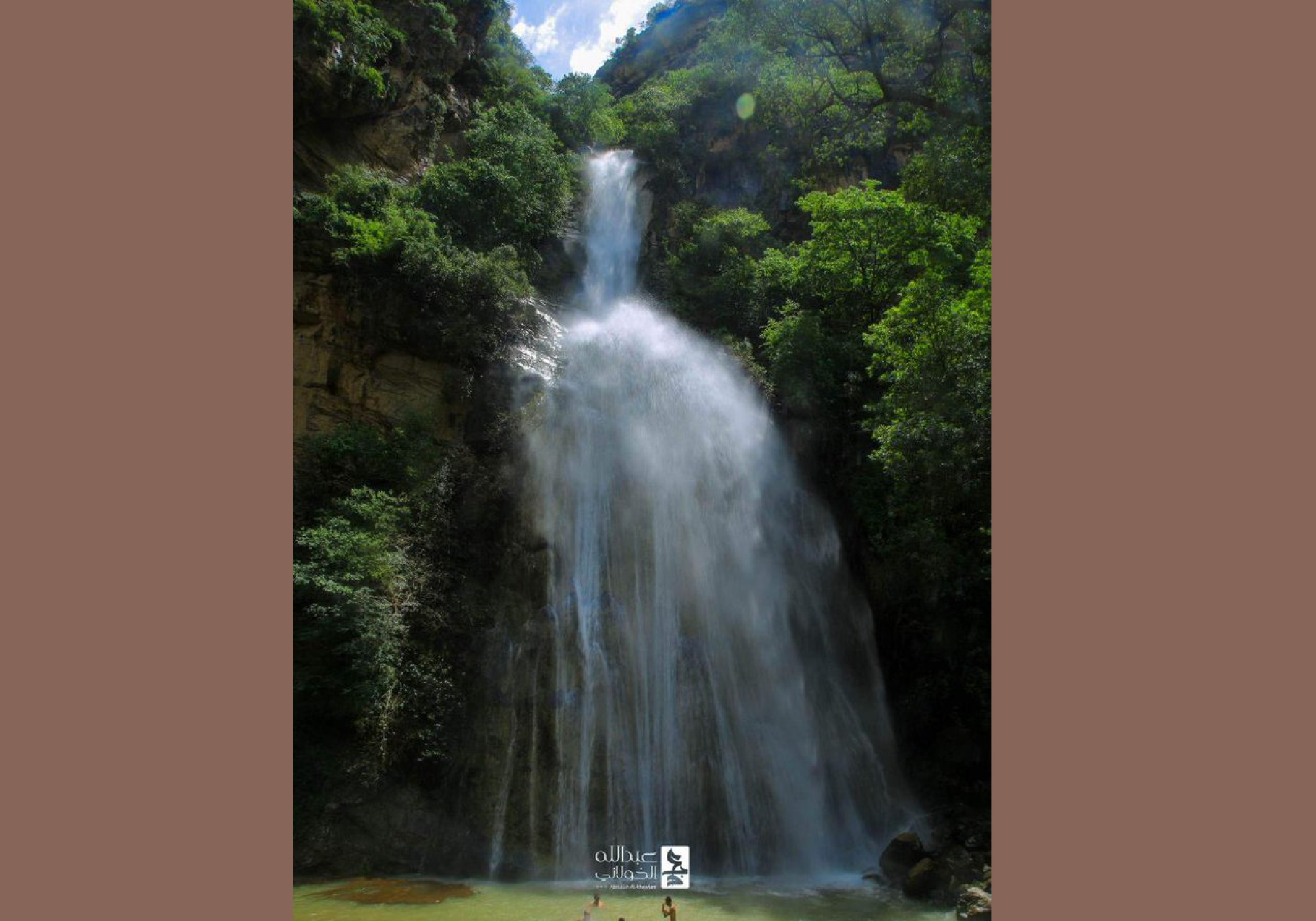
Shalal Alqalt is one of the most beautiful waterfalls in Yemen and one of the most popular tourist destinations, especially during the rainy season. The waterfall is located in the al-Arqoub area in al-Mahwit governorate, northwest of Sana'a, which is known for its greenery throughout the year and the abundance of historical and archaeological tourist sites.
Dar al-Hajar Palace
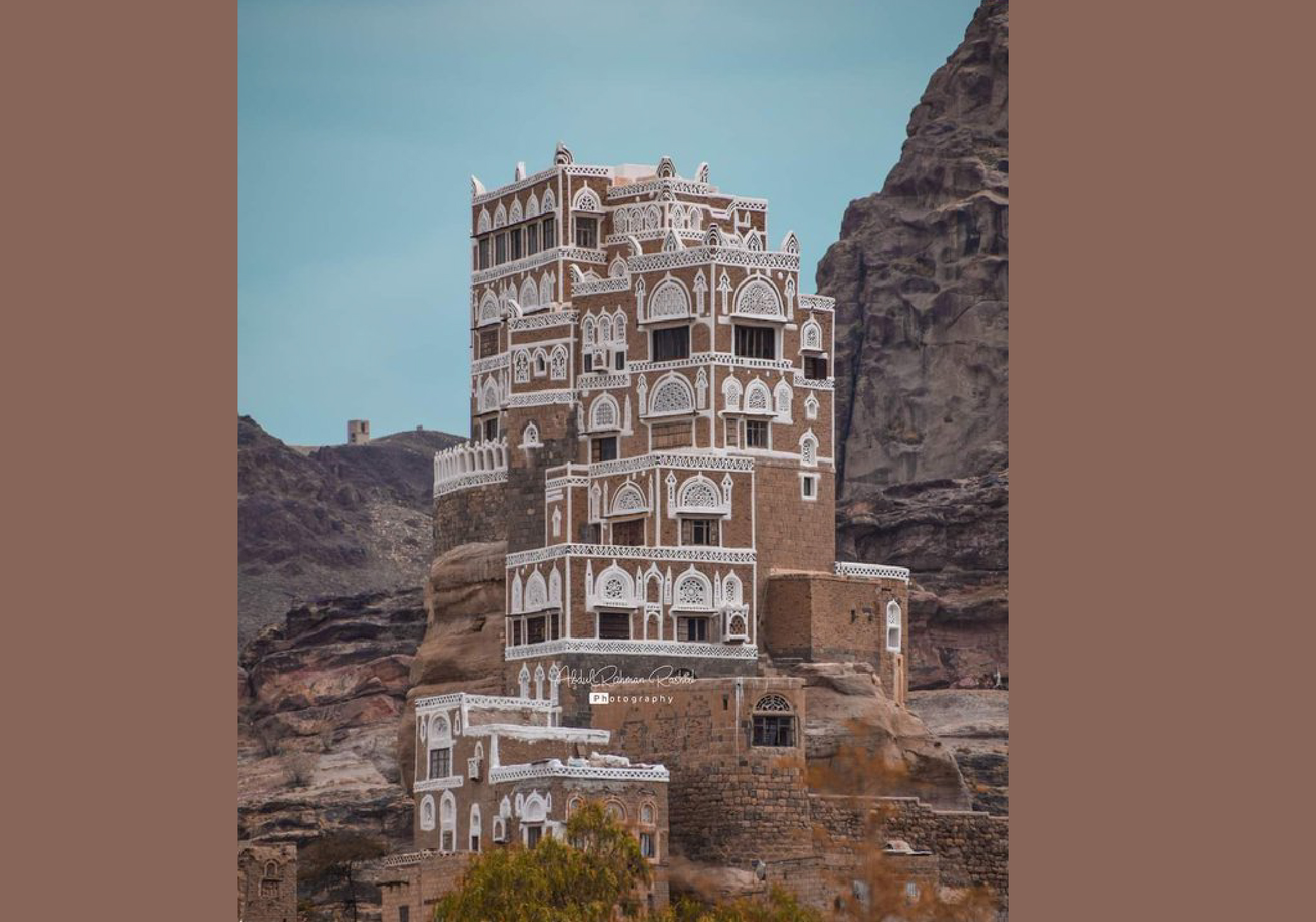
Dar al-Hajar in Sana'a is among the architectural masterpieces and historical buildings that stand on one of the fertile valleys – Wadi Dhar – in Sana'a. A former royal palace, some consider it one of the "wonders of Yemeni historical architecture". In the past, Dar al-Hajar was the headquarters of the rulers of the Sabaean state before it became a museum and a tourist landmark in 1962.
Made in Yemeni architectural style, its seven floors remain standing tall nearly 3,000 years later, with some built with black abyssinian stone and others carved into the rock. With many spacious halls, chambers, bedrooms, kitchens, bathrooms, laundry rooms, and accommodation rooms for servants and guards. At the palace gate stands the ancient Al-Taluka tree, estimated to be around 700 years old.
The historic city of Shibam in Hadhramaut, Yemen, is known as the "Manhattan of the Desert" or "Chicago of the Desert" and has been on UNESCO's World Heritage List since 1982. Many Yemenis say that it is home to the world's first skyscraper
Daghthour Dam
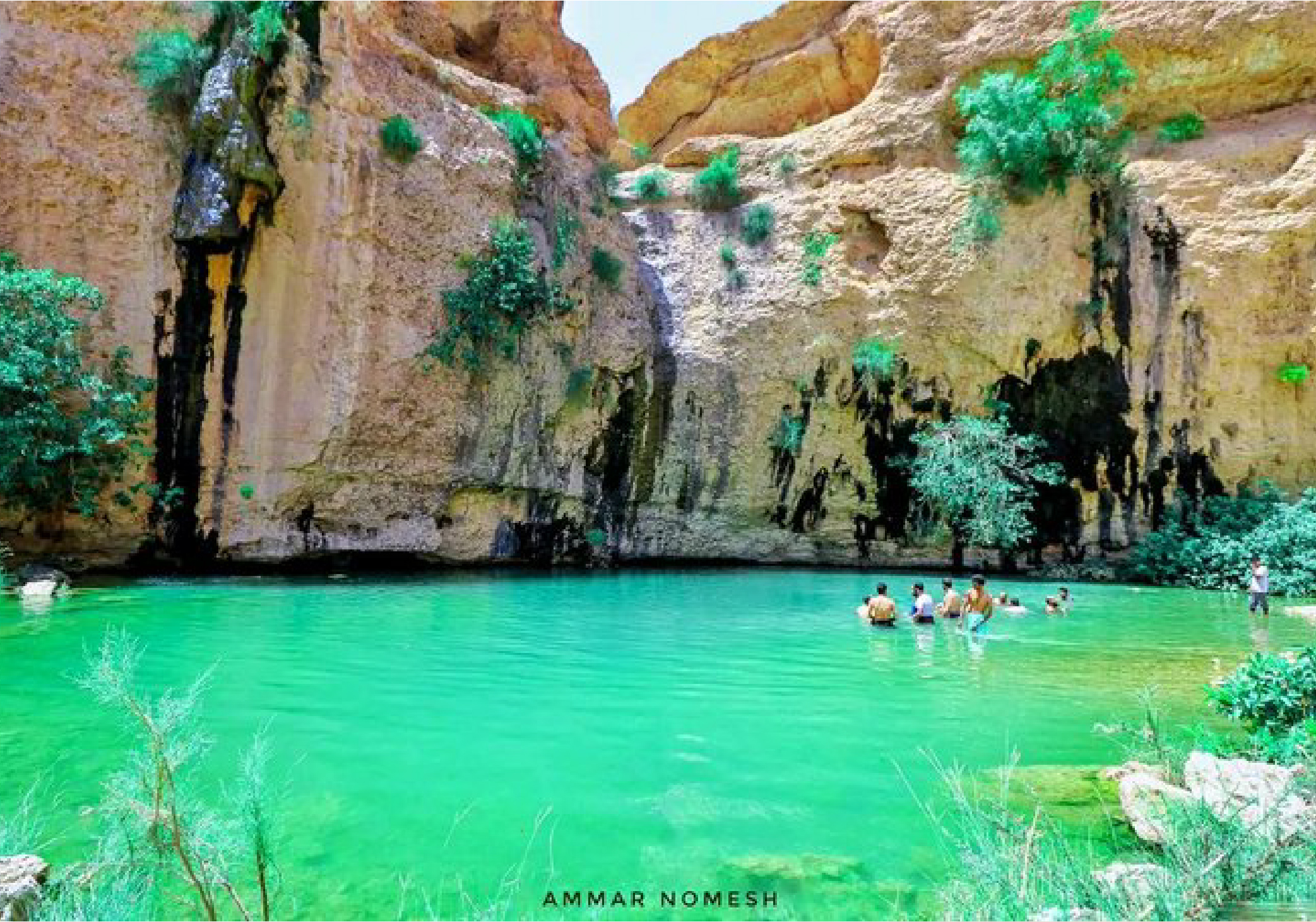
Daghthour Dam is known in Wadi Jardan as one of the most beautiful natural relaxation spots in Shabwa, in addition to being one of the most famous dams in the country. It is located in the middle of huge rocky hills and relies on rainwater and seasonal torrent, especially in autumn, for its water supply.
In addition to its scenic views, Daghthour Dam provides water for about 10,000 people and is used for irrigating nearby agricultural lands.
Buqshan Palace
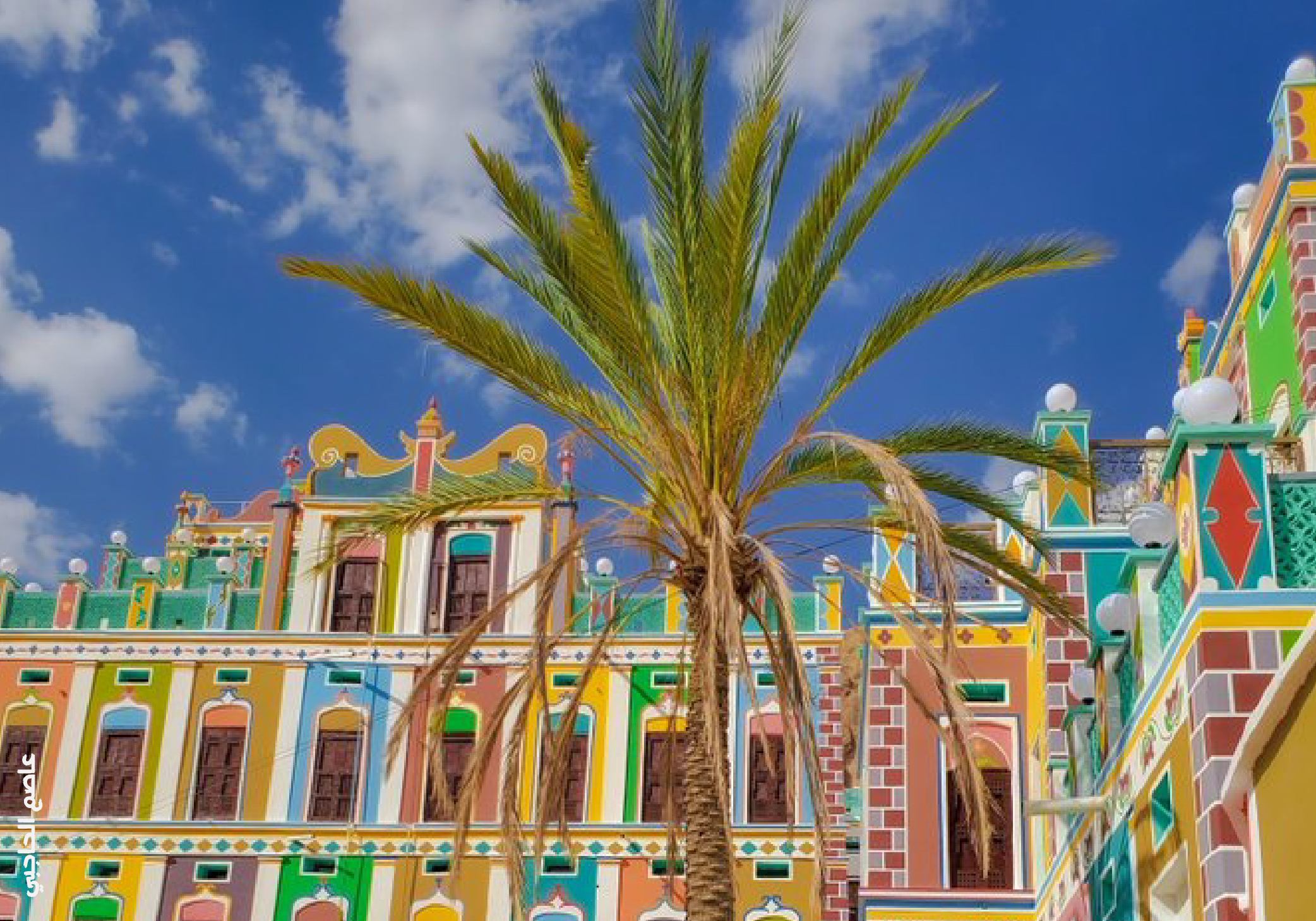
Buqshan Palace is one of the important historical landmarks in Hadhramaut Governorate. It is the largest palace on the left side of Wadi Dawan and is only surpassed in size by the Bin Laden Palace on the right side of Dawan. It is an extremely beautiful architectural building and an exceptional example of the ancient houses in Hadhramaut and Yemen.
The palace covers an area of about 800 square meters and has two main entrances, one for men and the other for women. It has two back doors and consists of eight floors.
There are more than 37 rooms, each with its own independent bathroom. The palace has 200 doors made of cedar or boxes, inlaid with iron and made by hand. The palace, which took 10 years to build, appears as an artistic painting with bright colors on its walls and external windows.
Wadi Dawan
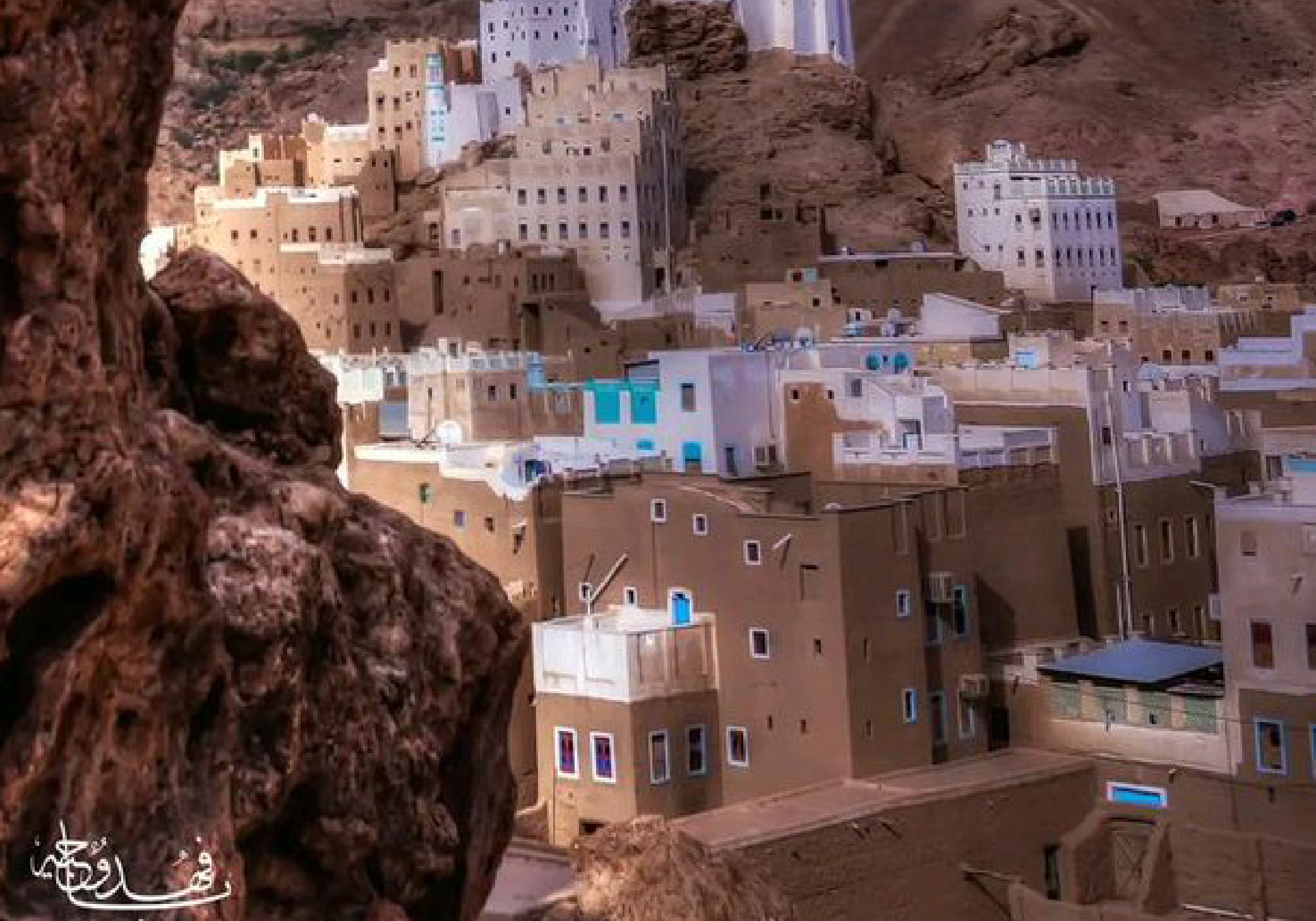
Wadi Dawan, one of the valleys in western Hadramout, is known as the "Valley of Secrets and Wonders" and sometimes as the "Valley of the Loved Ones". It branches off at its end into the right valley and the left valley.
The valley includes many historical villages, including Qarin, al-Hajarayn, and Lajrat.
Wadi Bulbal
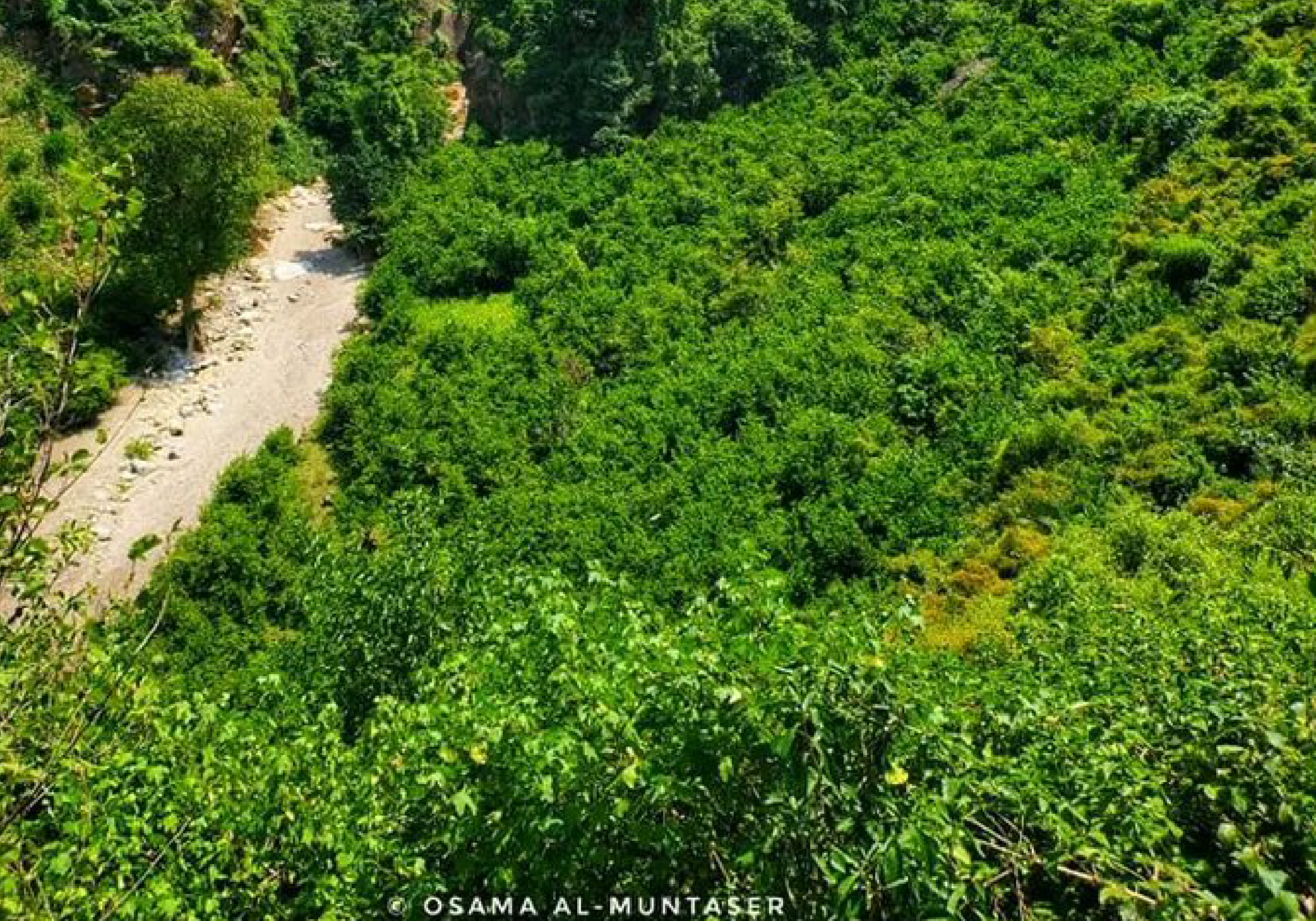
Wadi Bulbal is located between the districts of al-Jaafaria and al-Jubin in the rugged nature of the Raymah Governorate. The view in Wadi Bulbal stretches as far as the eye can see, showing a vibrant green, natural painting that is adorned by the sounds of rustling trees and the singing of birds, while the grooves carved by the floods in the folds of this valley add an unparalleled touch of beauty.
In addition to these natural and tourist places, the accounts aimed at portraying a positive image of Yemen also document the harvest seasons of the country's national wealth, especially coffee, and black figs. They also introduce the most prominent Yemeni social customs, especially those practiced during events and weddings.
بلغ سعر طن البنُ اليمني ذو الجودة العالية في احد مزادات أمريكا حوالي 350000$ ، متفوقاً على البن البرازيلي والأثيوبي الذي لم يتجاوزا الـ 40 الف دولار للطن ، وذالك لجودته وكثرة الطلب عليه.
— اليمن الكنز المدفون | Yemen BT (@YEMEN_BT) October 1, 2022
البُن اليمني مطلوب لكثير من الدول ، لكن كميات إنتاجه مازالت قليله جداً.
البُن اليمني ثروة. pic.twitter.com/FDW93pbPKY
Raseef22 is a not for profit entity. Our focus is on quality journalism. Every contribution to the NasRaseef membership goes directly towards journalism production. We stand independent, not accepting corporate sponsorships, sponsored content or political funding.
Support our mission to keep Raseef22 available to all readers by clicking here!
Interested in writing with us? Check our pitch process here!
